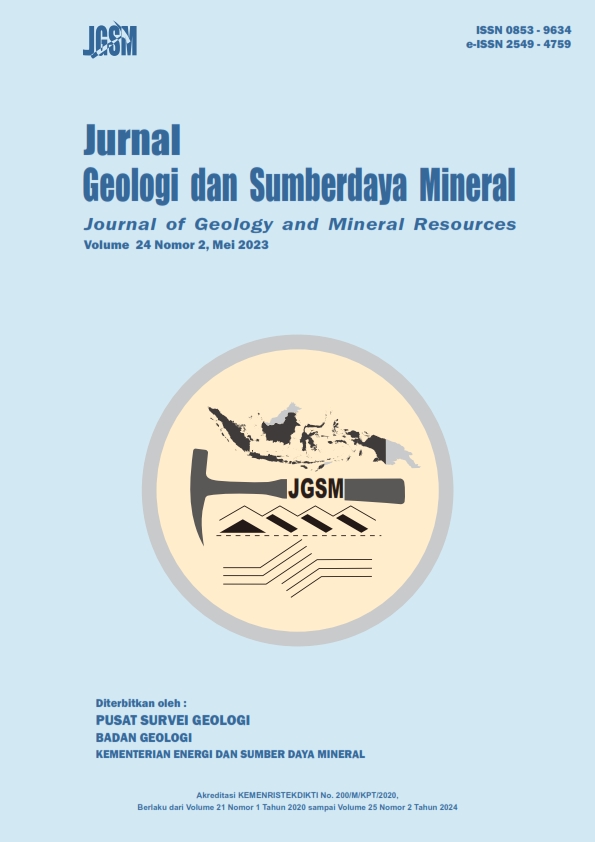Provenance and Paleoclimate Analysis of Sandstone from Meluhu Formation in Kendari, Southeast Sulawesi.
DOI:
https://doi.org/10.33332/jgsm.geologi.v24i2.776Abstract
The Meluhu Formation consists of quartz sandstone, red shale, siltstone, and mudstone at the bottom part, and alternating black shale, sandstone, and thin limestone in the upper part. Petrographic components composition can reveal the litho-tectonic setting of a region. The composition of sandstone can be done by determining and counting the proportion of a quartz minerals, feldspar, and rock fragment from thin sections using petrographic analysis. This result can guide to depositional setting and paleoclimates of a region. The Provenance and paleoclimates studies of Meluhu Sandstone are still relatively new. The purpose of this study was to find out the provenance and paleoclimate of sandstone of Meluhu Formation which is exposed in 14 sites along Kendari and adjacent area. The method used to make petrographic observations followed by data processing using the point counting method. The sandstone in this study area was classified into sublitharenite, lithic arenite, arkose, subarkose, and greywacke. The origin of rock was interpreted as located in the recycled orogenic province, interior craton, and undissected arc. The paleoclimate that occurred in the formation of these siliciclastic rocks was arid to humid.
Keywords: Meluhu Formation, provenance, paleoclimate, sandstone.
Downloads
Downloads
Published
Issue
Section
License
Copyright (c) 2023 Muhammad Firdaus

This work is licensed under a Creative Commons Attribution-NonCommercial 4.0 International License.
Authors who publish articles in Jurnal Geologi dan Sumberdaya Mineral (JGSM.Geologi) agree to the following terms:
- Authors retain copyright of the article and grant the journal right of first publication with the work simultaneously licensed under a CC-BY-NC or The Creative Commons Attribution–ShareAlike License.
- Authors are able to enter into separate, additional contractual arrangements for the non-exclusive distribution of the journal's published version of the work (e.g., post it to an institutional repository or publish it in a book), with an acknowledgment of its initial publication in this journal.
- Authors are permitted and encouraged to post their work online (e.g., in institutional repositories or on their website) prior to and during the submission process, as it can lead to productive exchanges, as well as earlier and greater citation of published work (See The Effect of Open Access)










